Abstract
The in vitro activities of mecillinam, ticarcillin, cefamandole, and cefoxitin, singly and in all possible combinations, against 53 clinical isolates were studied by a checkerboard method of determining minimal inhibitory concentrations. For selected representative strains, bactericidal activity was determined by minimal bactericidal concentrations and killing curves. Mecillinam was the least active antibiotic against gram-positive cocci, Pseudomonas aeruginosa, and Bacteroides fragilis and the most active against Enterobacteriaceae. Reproducibility of mecillinam minimal inhibitory concentrations for susceptible Enterobacteriaceae was often poor, however, due to minor variations in inoculum size. When mecillinam resistance was observed with Enterobacteriaceae, partial inhibition could be demonstrated at concentrations below minimal inhibitory concentrations, and bacterial cells were consistently ovoid or round; under those conditions the addition of a second study antibiotic resulted in marked synergistic inhibition and killing which was independent of inoculum size and susceptibility to the second antibiotic. In contrast, synergy with mecillinam against mecillinam-susceptible strains or with other antibiotic combinations against any species was not consistently observed.
Full text
PDF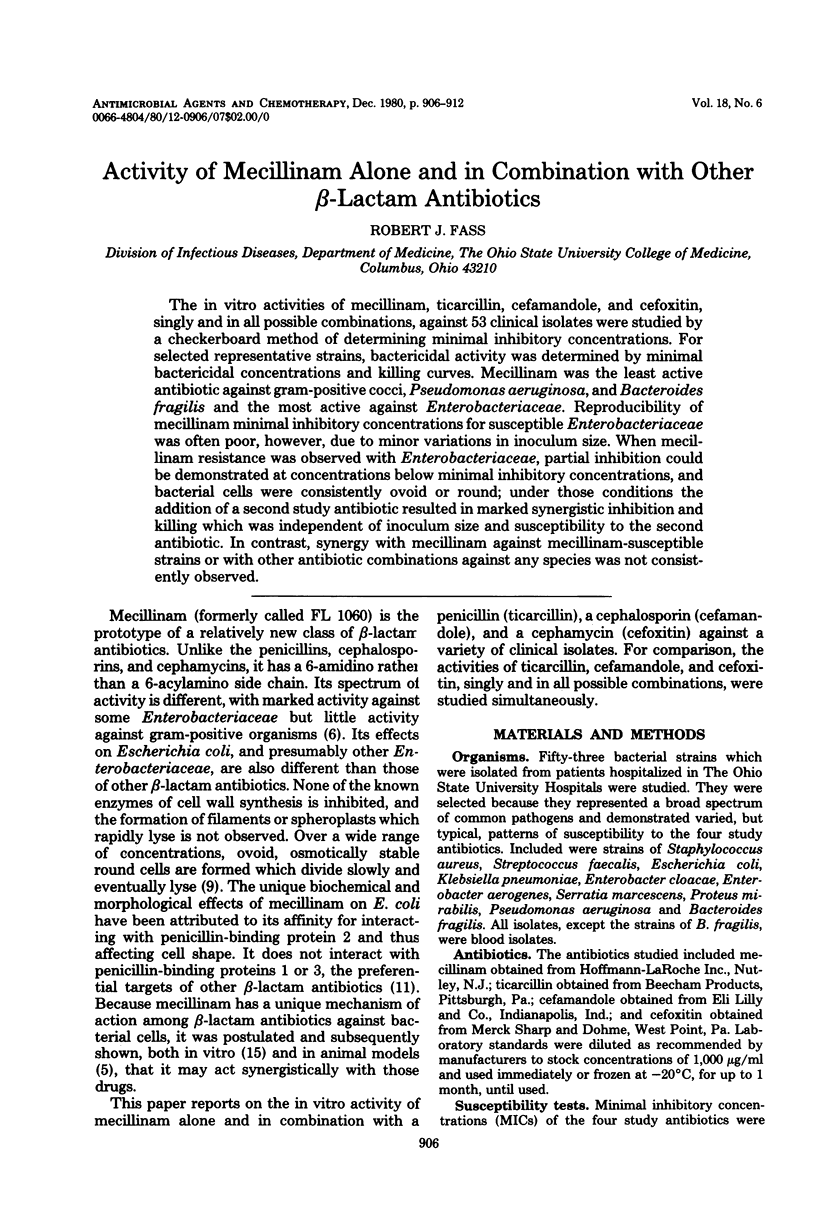
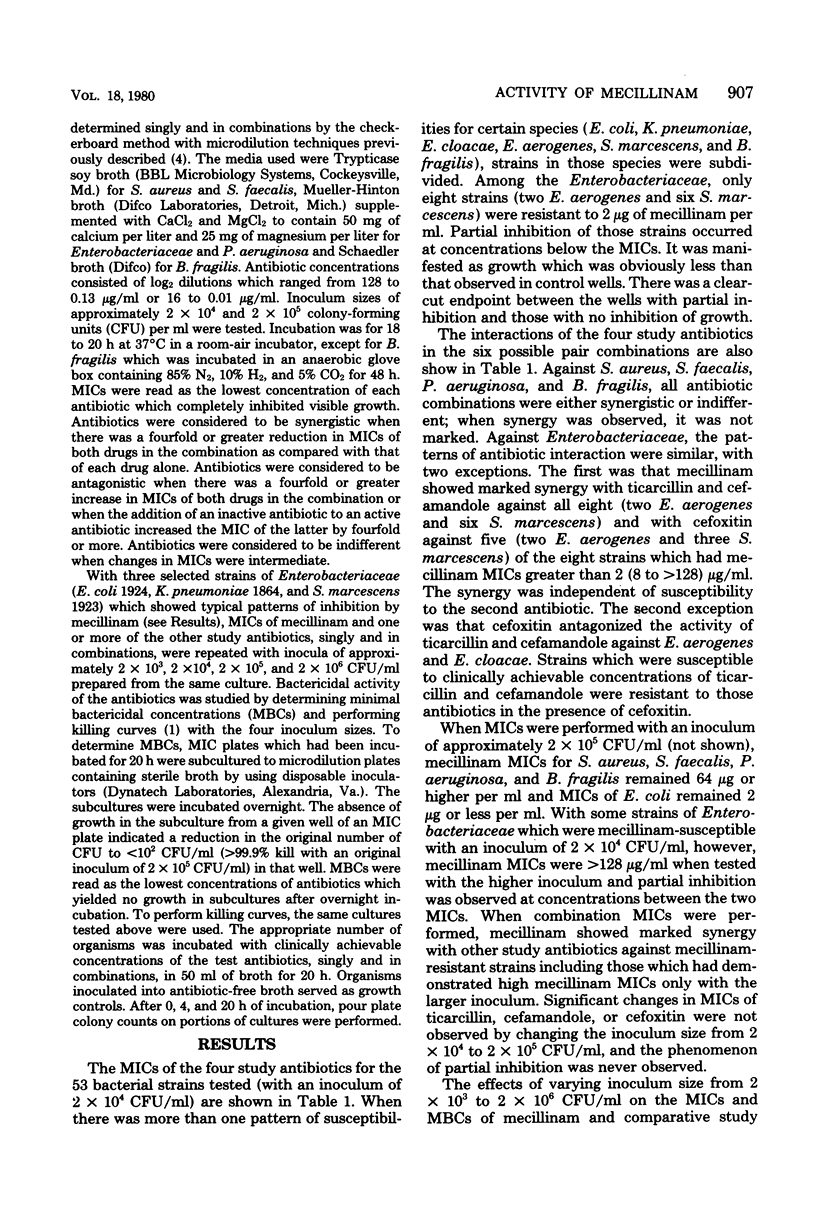
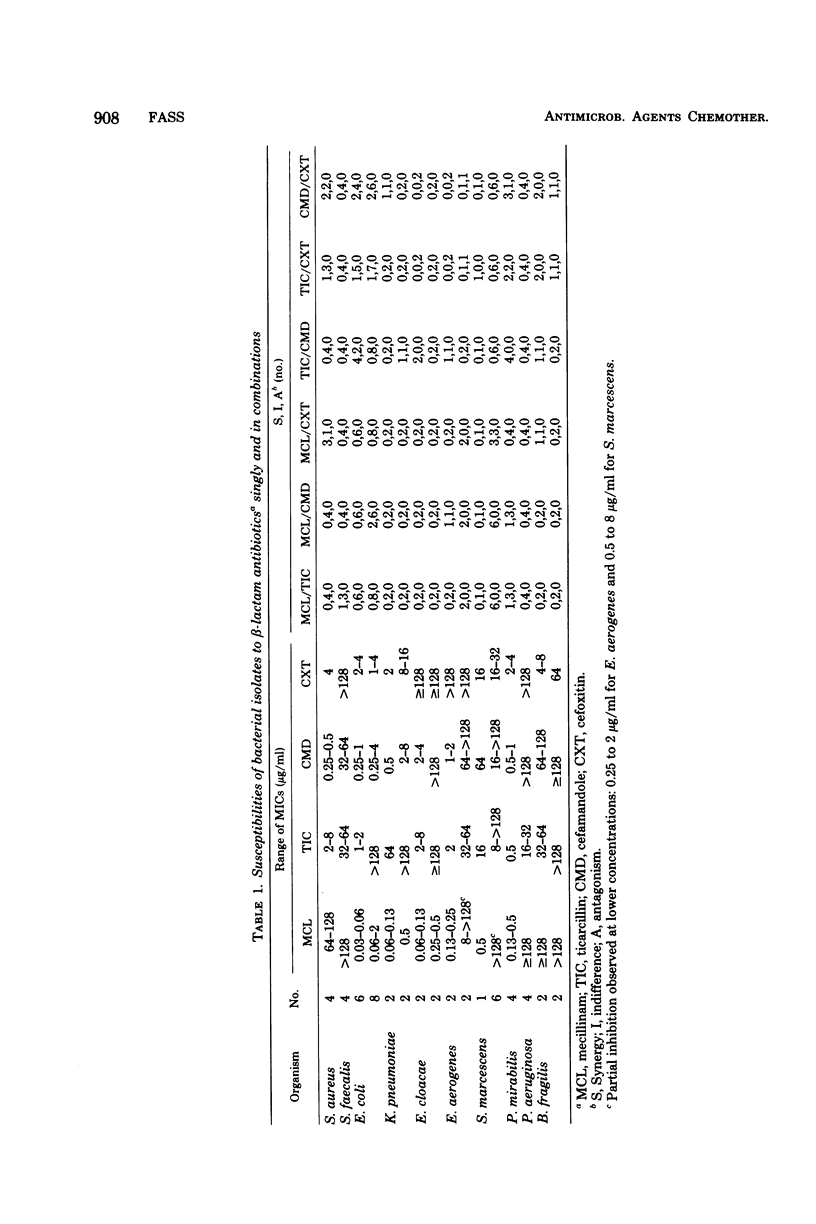
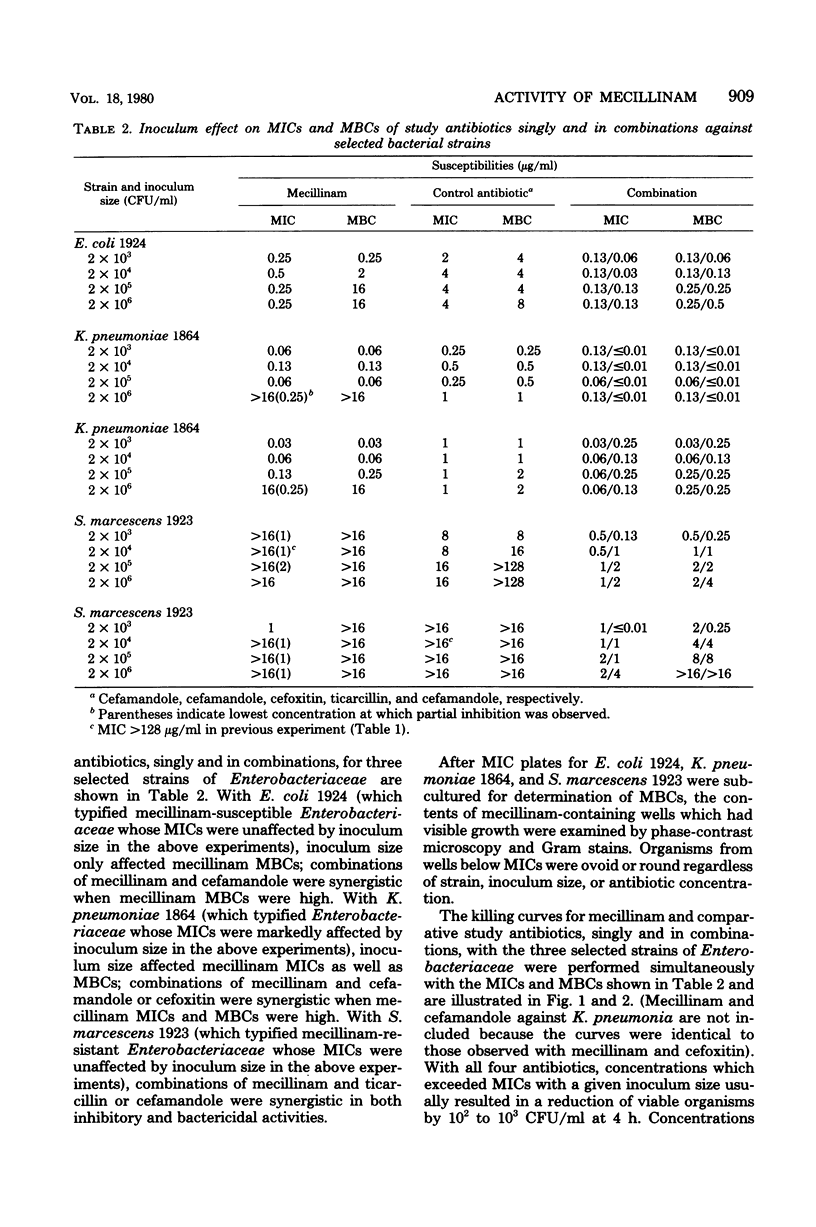
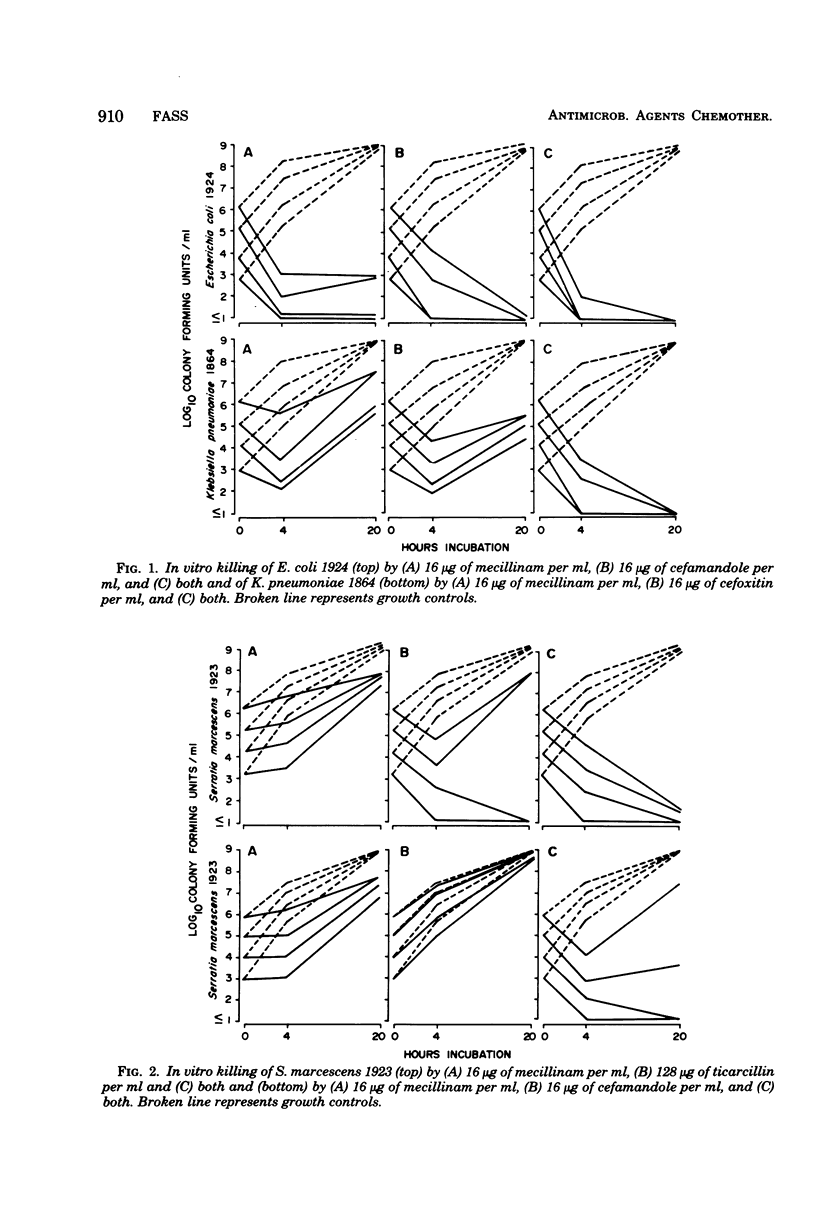
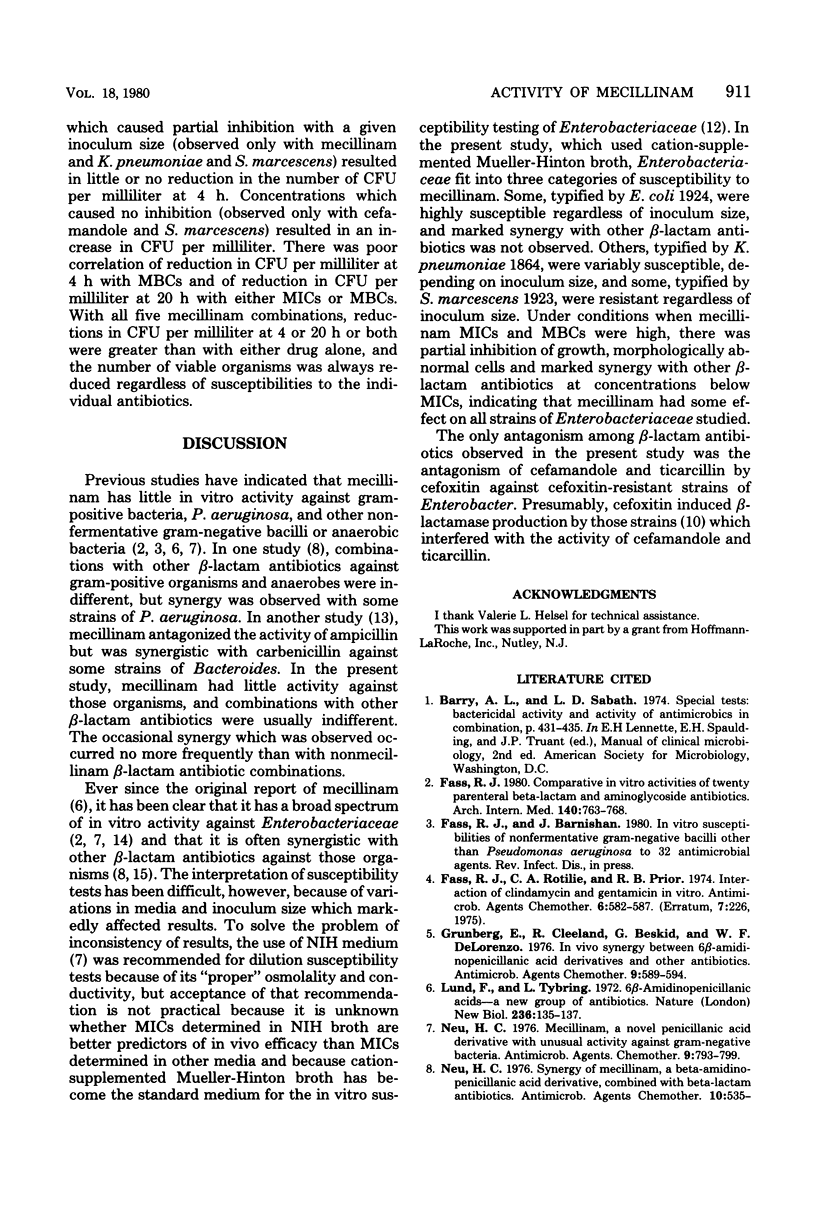
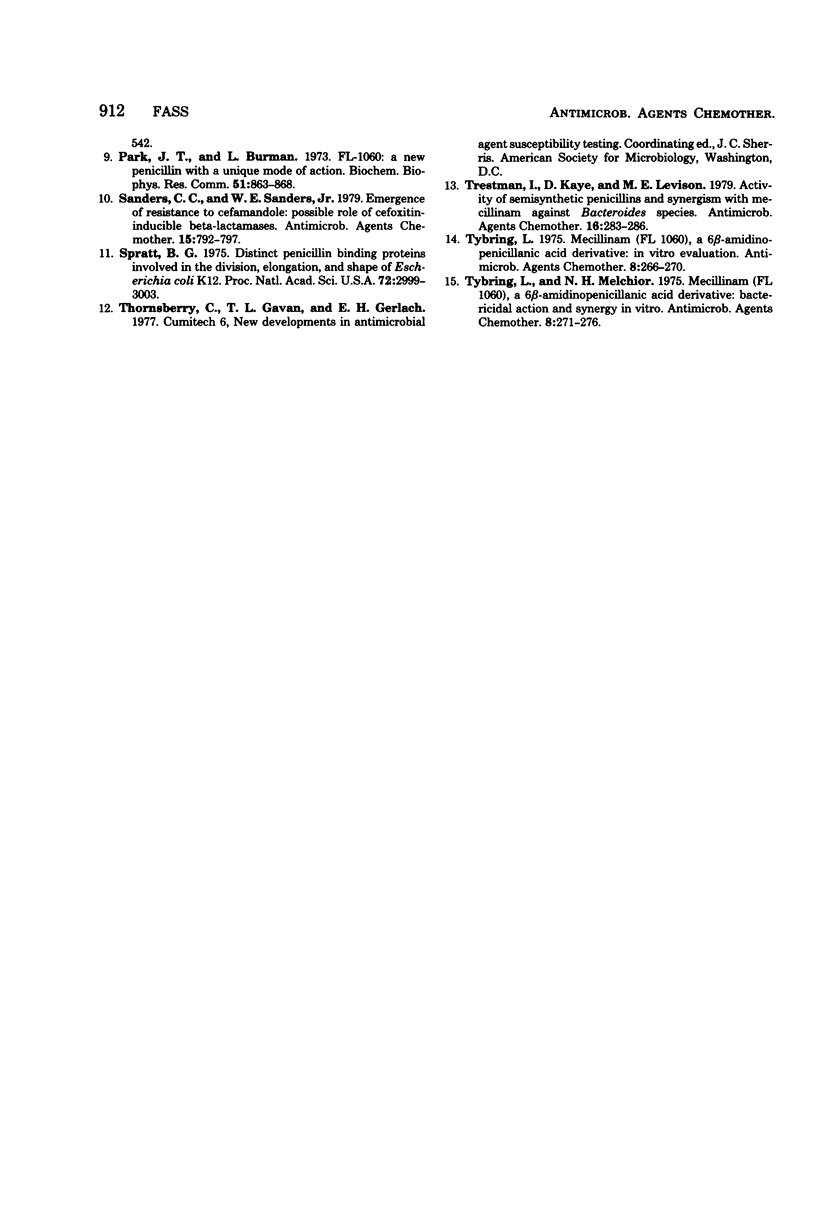
Selected References
These references are in PubMed. This may not be the complete list of references from this article.
- Fass R. J. In vitro activities of beta-lactam and aminoglycoside antibiotics. A comparative study of 20 parenterally administered drugs. Arch Intern Med. 1980 Jun;140(6):763–768. [PubMed] [Google Scholar]
- Fass R. J., Rotilie C. A., Prior R. B. Interaction of clindamycin and gentamicin in vitro. Antimicrob Agents Chemother. 1974 Nov;6(5):582–587. doi: 10.1128/aac.6.5.582. [DOI] [PMC free article] [PubMed] [Google Scholar]
- Grunberg E., Cleeland R., Beskid G., DeLorenzo W. F. In vivo synergy between 6 beta-amidinopenicillanic acid derivatives and other antibiotics. Antimicrob Agents Chemother. 1976 Apr;9(4):589–594. doi: 10.1128/aac.9.4.589. [DOI] [PMC free article] [PubMed] [Google Scholar]
- Lund F., Tybring L. 6 -amidinopenicillanic acids--a new group of antibiotics. Nat New Biol. 1972 Apr 5;236(66):135–137. doi: 10.1038/newbio236135a0. [DOI] [PubMed] [Google Scholar]
- Neu H. C. Mecillinam, a novel penicillanic acid derivative with unusual activity against gram-negative bacteria. Antimicrob Agents Chemother. 1976 May;9(5):793–799. doi: 10.1128/aac.9.5.793. [DOI] [PMC free article] [PubMed] [Google Scholar]
- Neu J. C. Synergy of mecillinam, a beta-amidinopenicillanic acid derivative, combined with beta-lactam antibiotics. Antimicrob Agents Chemother. 1976 Sep;10(3):535–542. doi: 10.1128/aac.10.3.535. [DOI] [PMC free article] [PubMed] [Google Scholar]
- Park J. T., Burman L. FL-1060: a new penicillin with a unique mode of action. Biochem Biophys Res Commun. 1973 Apr 16;51(4):863–868. doi: 10.1016/0006-291x(73)90006-5. [DOI] [PubMed] [Google Scholar]
- Sanders C. C., Sanders W. E., Jr Emergence of resistance to cefamandole: possible role of cefoxitin-inducible beta-lactamases. Antimicrob Agents Chemother. 1979 Jun;15(6):792–797. doi: 10.1128/aac.15.6.792. [DOI] [PMC free article] [PubMed] [Google Scholar]
- Spratt B. G. Distinct penicillin binding proteins involved in the division, elongation, and shape of Escherichia coli K12. Proc Natl Acad Sci U S A. 1975 Aug;72(8):2999–3003. doi: 10.1073/pnas.72.8.2999. [DOI] [PMC free article] [PubMed] [Google Scholar]
- Trestman I., Kaye D., Levison M. E. Activity of semisynthetic penicillins and synergism with mecillinam against Bacteroides species. Antimicrob Agents Chemother. 1979 Sep;16(3):283–286. doi: 10.1128/aac.16.3.283. [DOI] [PMC free article] [PubMed] [Google Scholar]
- Tybring L. Mecillinam (FL 1060), a 6beta-amidinopenicillanic acid derivative: in vitro evaluation. Antimicrob Agents Chemother. 1975 Sep;8(3):266–270. doi: 10.1128/aac.8.3.266. [DOI] [PMC free article] [PubMed] [Google Scholar]
- Tybring L., Melchior N. H. Mecillinam (FL 1060), a 6beta-amidinopenicillanic acid derivative: bactericidal action and synergy in vitro. Antimicrob Agents Chemother. 1975 Sep;8(3):271–276. doi: 10.1128/aac.8.3.271. [DOI] [PMC free article] [PubMed] [Google Scholar]


